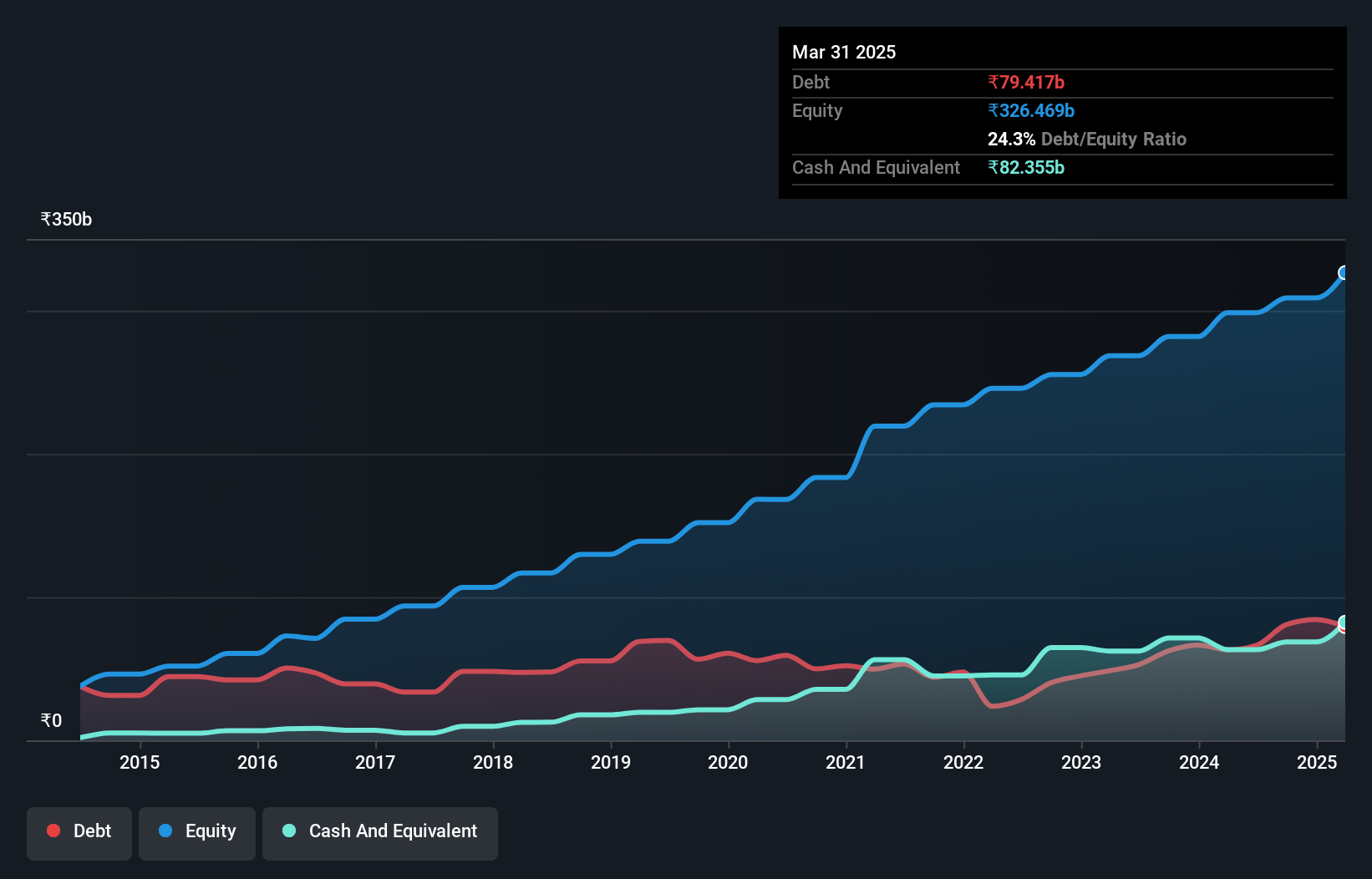Aurobindo Pharma (NSE:AUROPHARMA) Seems To Use Debt Quite Sensibly
Warren Buffett famously said, 'Volatility is far from synonymous with risk.' So it seems the smart money knows that debt - which is usually involved in bankruptcies - is a very important factor, when you assess how risky a company is. As with many other companies Aurobindo Pharma Limited (NSE:AUROPHARMA) makes use of debt. But the more important question is: how much risk is that debt creating?
What Risk Does Debt Bring?
Debt is a tool to help businesses grow, but if a business is incapable of paying off its lenders, then it exists at their mercy. Ultimately, if the company can't fulfill its legal obligations to repay debt, shareholders could walk away with nothing. While that is not too common, we often do see indebted companies permanently diluting shareholders because lenders force them to raise capital at a distressed price. Having said that, the most common situation is where a company manages its debt reasonably well - and to its own advantage. When we think about a company's use of debt, we first look at cash and debt together.
What Is Aurobindo Pharma's Net Debt?
You can click the graphic below for the historical numbers, but it shows that as of March 2025 Aurobindo Pharma had ₹79.4b of debt, an increase on ₹63.2b, over one year. However, it does have ₹82.4b in cash offsetting this, leading to net cash of ₹2.94b.

A Look At Aurobindo Pharma's Liabilities
We can see from the most recent balance sheet that Aurobindo Pharma had liabilities of ₹146.8b falling due within a year, and liabilities of ₹24.6b due beyond that. On the other hand, it had cash of ₹82.4b and ₹57.6b worth of receivables due within a year. So its liabilities outweigh the sum of its cash and (near-term) receivables by ₹31.4b.
Since publicly traded Aurobindo Pharma shares are worth a total of ₹674.3b, it seems unlikely that this level of liabilities would be a major threat. But there are sufficient liabilities that we would certainly recommend shareholders continue to monitor the balance sheet, going forward. Despite its noteworthy liabilities, Aurobindo Pharma boasts net cash, so it's fair to say it does not have a heavy debt load!
Check out our latest analysis for Aurobindo Pharma
And we also note warmly that Aurobindo Pharma grew its EBIT by 13% last year, making its debt load easier to handle. When analysing debt levels, the balance sheet is the obvious place to start. But ultimately the future profitability of the business will decide if Aurobindo Pharma can strengthen its balance sheet over time. So if you want to see what the professionals think, you might find this free report on analyst profit forecasts to be interesting.
Finally, a business needs free cash flow to pay off debt; accounting profits just don't cut it. While Aurobindo Pharma has net cash on its balance sheet, it's still worth taking a look at its ability to convert earnings before interest and tax (EBIT) to free cash flow, to help us understand how quickly it is building (or eroding) that cash balance. Over the last three years, Aurobindo Pharma recorded negative free cash flow, in total. Debt is far more risky for companies with unreliable free cash flow, so shareholders should be hoping that the past expenditure will produce free cash flow in the future.
Summing Up
We could understand if investors are concerned about Aurobindo Pharma's liabilities, but we can be reassured by the fact it has has net cash of ₹2.94b. And it also grew its EBIT by 13% over the last year. So we don't have any problem with Aurobindo Pharma's use of debt. Over time, share prices tend to follow earnings per share, so if you're interested in Aurobindo Pharma, you may well want to click here to check an interactive graph of its earnings per share history.
When all is said and done, sometimes its easier to focus on companies that don't even need debt. Readers can access a list of growth stocks with zero net debt 100% free, right now.
New: Manage All Your Stock Portfolios in One Place
We've created the ultimate portfolio companion for stock investors, and it's free.
• Connect an unlimited number of Portfolios and see your total in one currency
• Be alerted to new Warning Signs or Risks via email or mobile
• Track the Fair Value of your stocks
Have feedback on this article? Concerned about the content? Get in touch with us directly. Alternatively, email editorial-team (at) simplywallst.com.
This article by Simply Wall St is general in nature. We provide commentary based on historical data and analyst forecasts only using an unbiased methodology and our articles are not intended to be financial advice. It does not constitute a recommendation to buy or sell any stock, and does not take account of your objectives, or your financial situation. We aim to bring you long-term focused analysis driven by fundamental data. Note that our analysis may not factor in the latest price-sensitive company announcements or qualitative material. Simply Wall St has no position in any stocks mentioned.
About NSEI:AUROPHARMA
Aurobindo Pharma
A biopharmaceutical company, develops, manufactures, commercializes, and sells generic pharmaceuticals, active pharmaceutical ingredients (APIs), and injectables.
Flawless balance sheet and fair value.
Market Insights
Community Narratives




